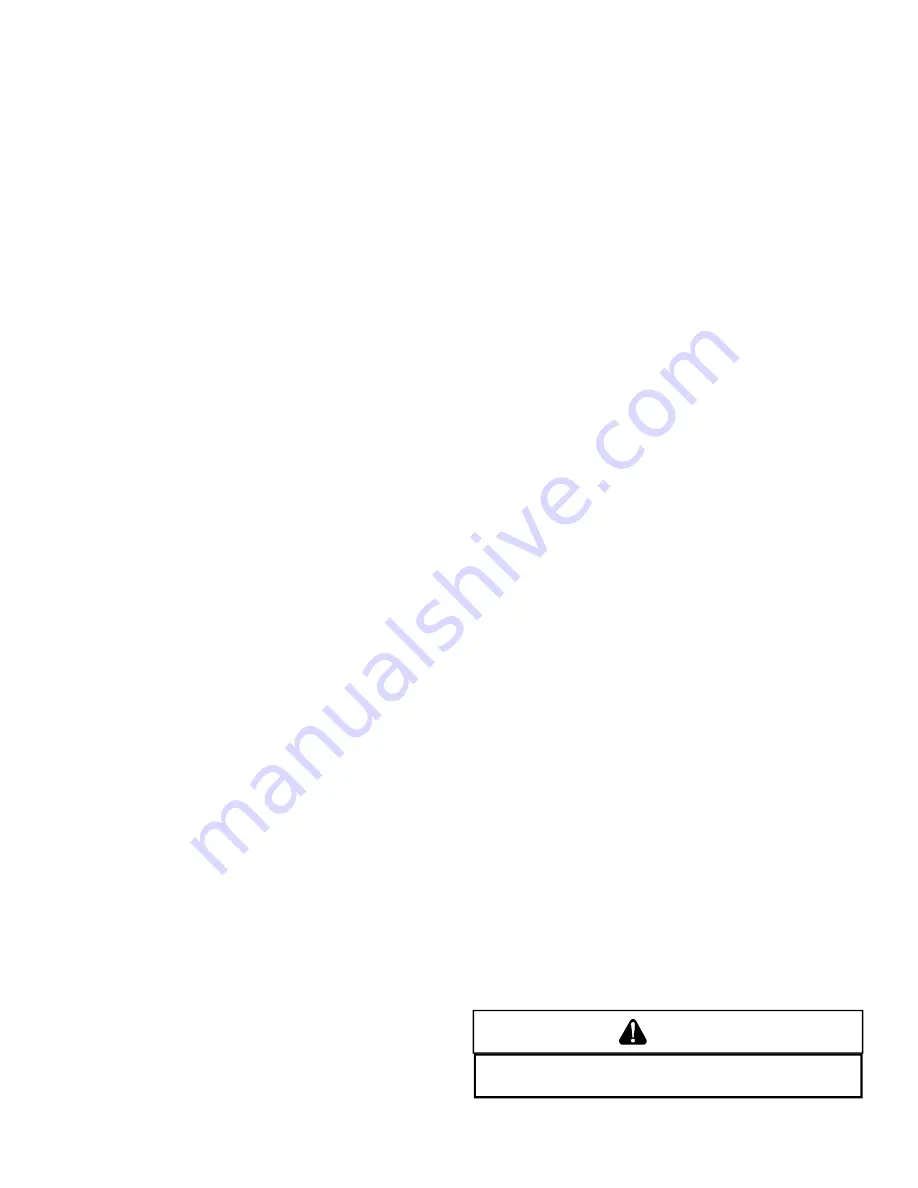
14
If a flexible liner is to be used, it must be made of the proper
materials:
• For most residential applications, an aluminum liner should
be acceptable.
• If the combustion air supplied to the furnace will be
contaminated with compounds containing chlorine or
fluorine, a liner of AL294C stainless steel should be used.
Common sources of chlorine and fluorine compounds
include indoor swimming pools and chlorine bleaches, paint
strippers, adhesives, paints, varnishes, sealers, waxes
(which are not yet dried) and solvents used during
construction and remodeling. Various commercial and
industrial processes may also be sources of chlorine/
fluorine compounds.
• Heavier gauge 300 and 400 series stainless steel liners
were developed for use with oil or solid fuel appliances.
They are not suitable for use with gas-fired appliances.
Flexible liners specifically intended and tested for gas
applications are listed in the UL “Gas and Oil Equipment
Directory”. (UL Standard 1777).
For sizing of flexible liners, see Note 22 and the tables in the
National Fuel Gas Code NFPA 54/ANSI Z223.1 - latest edition
and in the National Standard of Canada, CAN/CSA B149.1 and
CAN/CSA B149.2 - latest editions and amendments.
To install the liner, read and follow the liner manufacturer’s
instructions and your local codes. Excess liner length should be
pulled out of the chimney and cut off. Use caution when doing
this, as the cut edges of flexible liners may be sharp. Do not spiral
excess liner inside of the chimney. Support the liner as
recommended by the liner manufacturer.
Some manufacturers of flexible liners offer an insulation sleeve
designed to be added to the liner before it is installed in the
chimney. (Poured insulation, either vermiculite or other materials,
is no longer recommended.) Insulation will need to be added to
the flexible liner if:
• It is required by the liner manufacturer’s instructions.
• The previous liner was properly sized and installed, and
suffered from condensation damage.
• It is required by your local building codes.
Even if none of those three conditions exist which require additional
liner insulation, the installer may wish to consider it if:
• The local climate is very cold.
• The chimney is very tall.
• The vent connectors used are very long or have a large
number of elbows.
• Local experience indicates that flexible liners installed
without insulation are likely to have condensation problems.
Insulation must be selected and installed in accordance with the
liner manufacturer’s instructions.
Finally, cap the chimney and terminate the liner in accordance
with the liner manufacturer’s instructions.
VIII. ELECTRICAL CONNECTIONS
WARNING
T
O AVOID THE RISK OF ELECTRICAL SHOCK, WIRING TO THE UNIT MUST BE
POLARIZED AND GROUNDED.
F
IX
1 - L
INER
TERMINATION
Any cap or roof assembly used with a liner must be approved by
the liner manufacturer for such use. The liner and cap/roof
assembly must then terminate above the roof in accordance with
the manufacturer’s instructions.
In some cases, a shorter extension above the roof may be possible
with a liner than would be required with a masonry chimney.
For further information on relining, see Fix 4.
F
IX
2 -C
HANGE
VENTING
ARRANGEMENTS
If the masonry chimney has more than one channel, it may be
possible to vent the gas appliances into one channel and vent the
solid or liquid fuel appliance(s) into another channel(s). Do not
vent an 80+ Furnace inside of a metal liner with other appliances
vented outside the liner.
Alternatively, the homeowner may agree to discontinue use of the
fireplace (solid fuel appliance). If so, the tile liner must be cleaned
to remove creosote buildup. The fireplace opening must then be
permanently sealed.
If oil-fired appliance(s) are being replaced by gas-fired
appliance(s), the tile liner must first be cleaned to remove the fuel
oil residue.
If none of the above options is practical, the furnace may need to
be vented vertically with a B Vent.
Under some conditions, Furnace *9 could be installed rather than
an *8. The * 9 can be vented horizontally or vertically through
PVC pipe.
F
IX
3 - R
EBUILD
THE
CROWN
If the chimney crown is damaged, a qualified mason must repair it
in accordance with nationally recognized building codes or
standards. One such standard which may be referenced is the
Standard for Chimneys, Fireplaces, Vents, and Solid Fuel Burning
Appliances, ANSI/NFPA 211.
F
IX
4 - R
ELINING
Relining options include B vent and flexible liners.
If the chimney has diagonal offsets, B vent probably cannot be
used.
If B vent is to be used, it must be supported adequately. Supports
(such as fire stops or thimbles) must be used to prevent the B
vent from coming into direct contact with the tile liner or chimney
walls. Direct contact would result in higher heat loss, with an
increased possibility of poor venting system performance.
It is not acceptable to vent one appliance inside the B vent and
other appliances outside. The excess space between the B vent
and the chimney walls must be covered at the top of the chimney
by a weatherproof, corrosion resistant flashing.
The B vent should then be topped with a listed vent cap. The
listed vent cap will, when installed per the manufacturer’s
instructions, prevent problems due to rain, birds, or wind effects.
A B-vent installed as described in this section is considered to be
an enclosed vent system, and the sizing tables in National Fuel
Gas Code NFPA 54/ANSI Z223.1 - latest edition and in the National
Standard of Canada, CAN/CSA B149.1 and CAN/CSA B149.2 -
latest editions and amendments may be used.















































